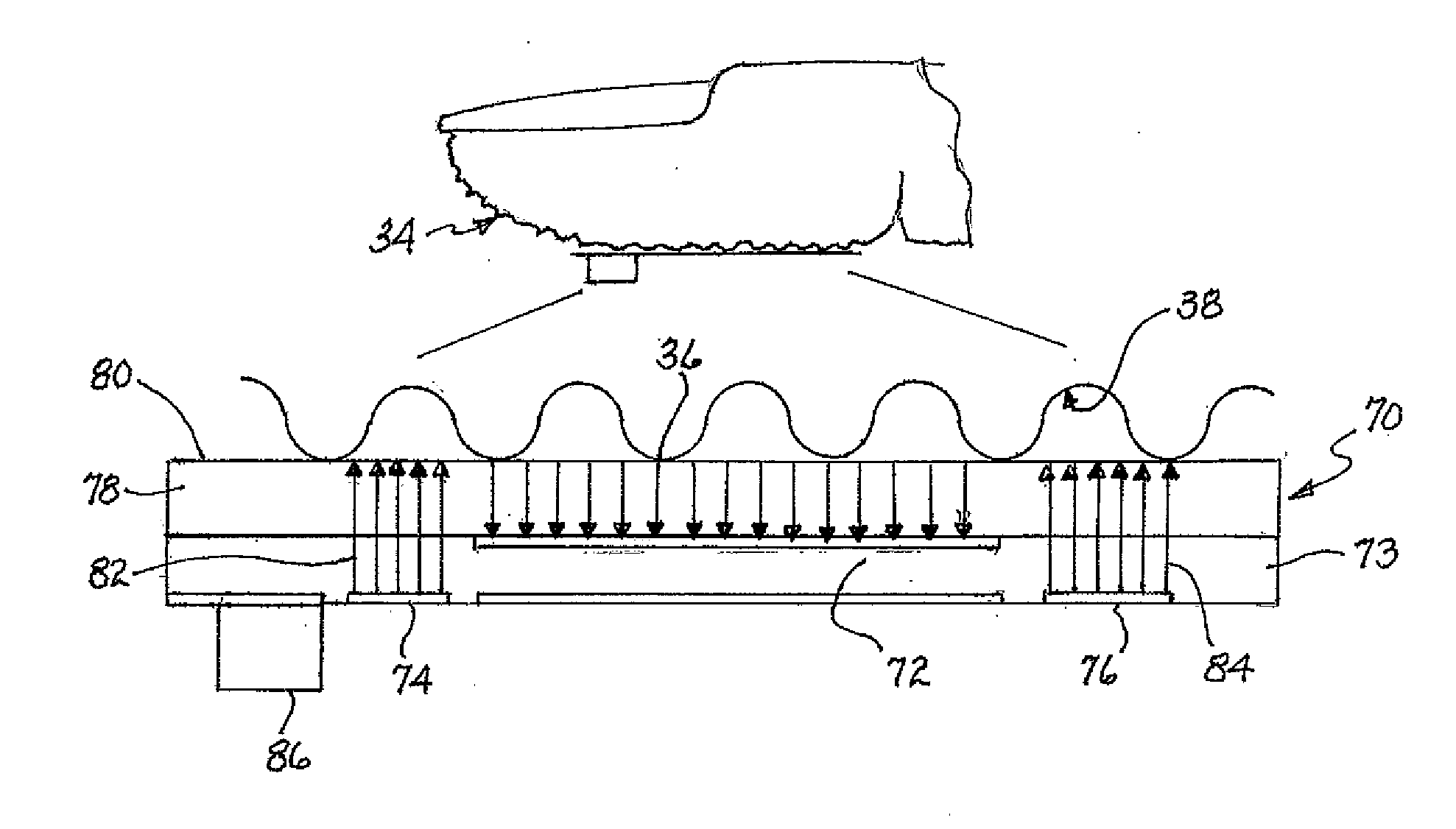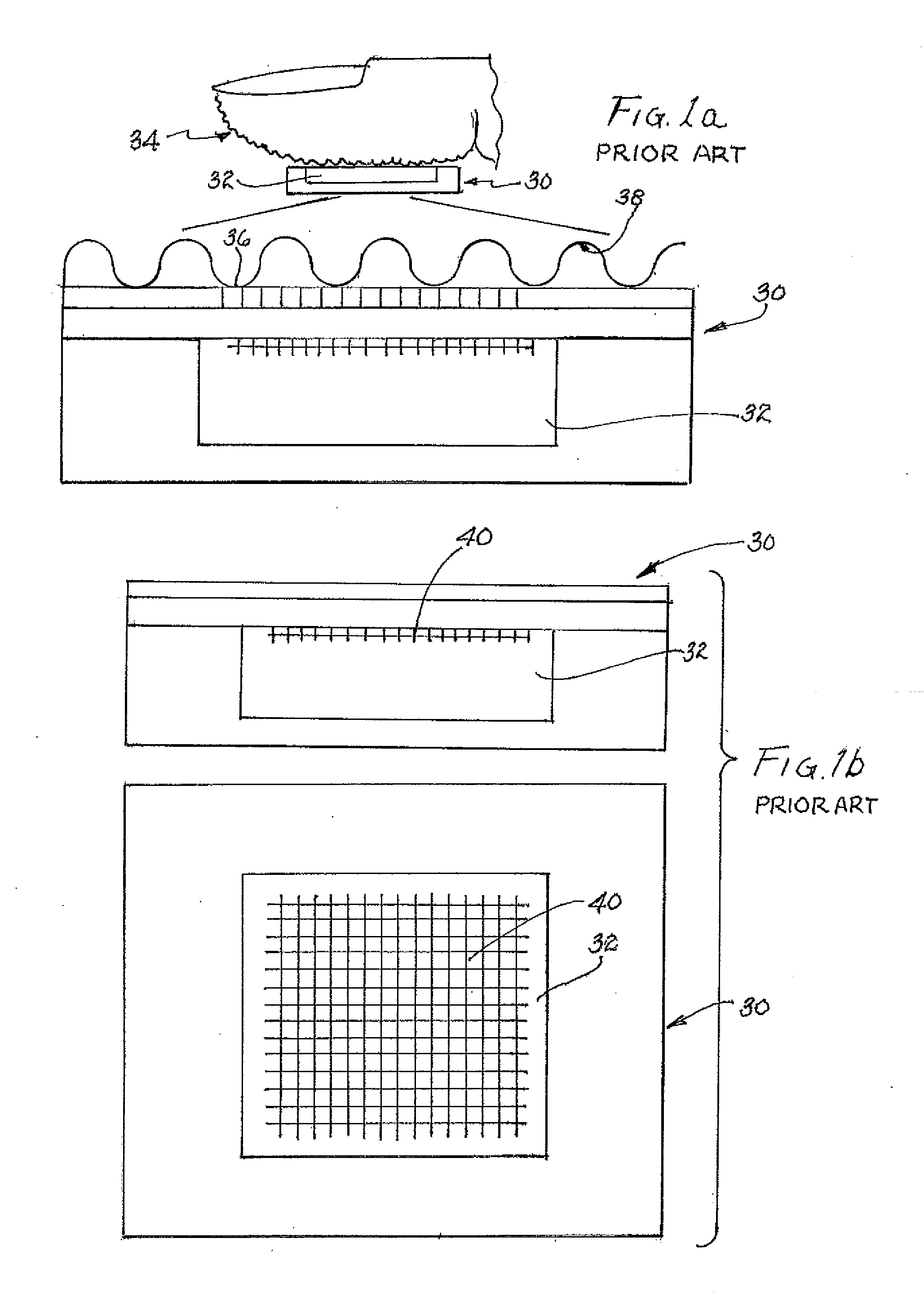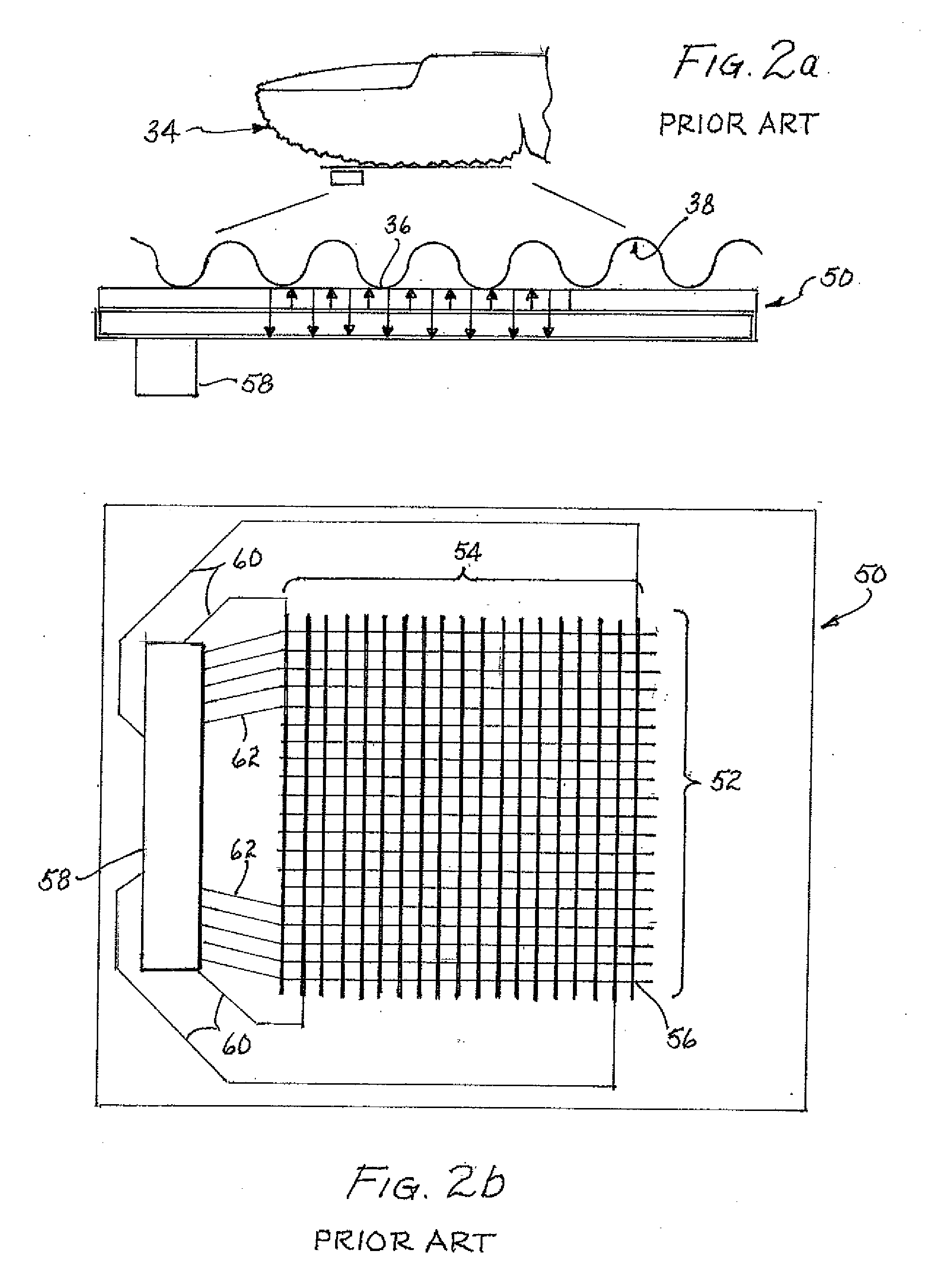Apparatus and Method for TFT Fingerprint Sensor
a fingerprint sensor and apparatus technology, applied in the field of electronic fingerprint sensors, can solve the problems of high price, fingerprint sensor, and high price, and achieve the effect of simple fingerprint image and more accura
- Summary
- Abstract
- Description
- Claims
- Application Information
AI Technical Summary
Benefits of technology
Problems solved by technology
Method used
Image
Examples
Embodiment Construction
[0083]The following detailed description is to be read with reference to the figures, in which like elements in different figures have like reference numerals. The figures, which are not necessarily to scale, depict selected embodiments and are not intended to limit the scope of the invention.
[0084]FIGS. 1a and 1b illustrate a known fingerprint sensor 30 which utilizes an entire silicon chip 32 as the receiver for signals derived from the user's fingertip 34. Various methods have been described for transmitting a signal into the user's finger, both on the silicon chip itself, and external to the silicon chip; in either case, the pixels 40 used to receive signals from the user's fingertip are directly formed on a silicon chip. The signal is received at each pixel in the silicon chip. Signal detection may be based upon voltage amplitude, signal phase shift, or other methods for detecting differences between signals that pass through a ridge 36 of the fingertip versus signals that pass...
PUM
 Login to View More
Login to View More Abstract
Description
Claims
Application Information
 Login to View More
Login to View More - R&D
- Intellectual Property
- Life Sciences
- Materials
- Tech Scout
- Unparalleled Data Quality
- Higher Quality Content
- 60% Fewer Hallucinations
Browse by: Latest US Patents, China's latest patents, Technical Efficacy Thesaurus, Application Domain, Technology Topic, Popular Technical Reports.
© 2025 PatSnap. All rights reserved.Legal|Privacy policy|Modern Slavery Act Transparency Statement|Sitemap|About US| Contact US: help@patsnap.com



